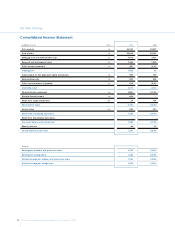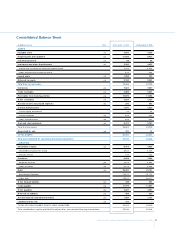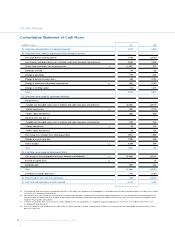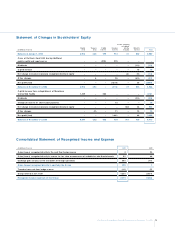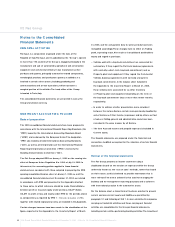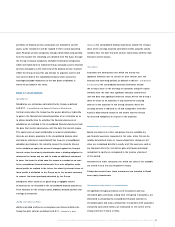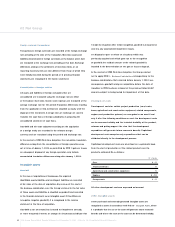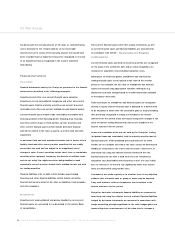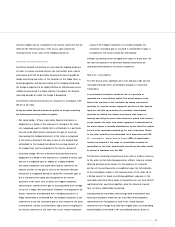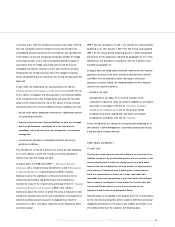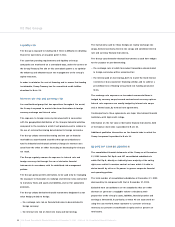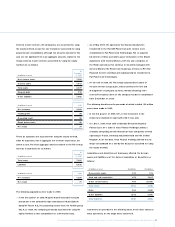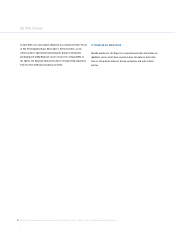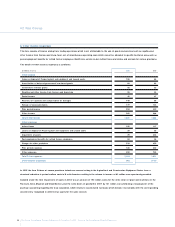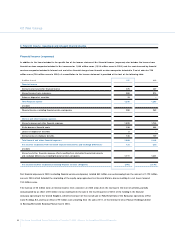Chrysler 2005 Annual Report Download - page 87
Download and view the complete annual report
Please find page 87 of the 2005 Chrysler annual report below. You can navigate through the pages in the report by either clicking on the pages listed below, or by using the keyword search tool below to find specific information within the annual report.
86 Fiat Group Consolidated Financial Statements at December 31, 2005 - N otes to the Consolidated Financial Statements
02 Fiat Group
“Asset-backed financing”. Gains and losses relating to the sale of such
assets are not recognised until the assets are removed from the
Group balance sheet.
Inventory
Inventories of raw materials, semifinished products and finished goods
are stated at the lower of cost and net realisable value, cost being
determined on a first in-first-out (FIFO ) basis.The measurement of
inventories includes the direct costs of materials, labour and indirect
costs (variable and fixed). Provision is made for obsolete and slow-
moving raw materials, finished goods, spare parts and other supplies
based on their expected future use and realisable value. N et
realisable value is the estimated selling price in the ordinary course of
business less the estimated costs of completion and the estimated
costs for sale and distribution.
The measurement of work in progress is based on the stage of
completion and is presented net of progress billings received from
customers.Any losses on such contracts are fully recorded in the
income statement when they become known.
Assets held for sale
Assets held for sale include non-current assets (or assets included in
disposal groups) whose carrying amount will be recovered principally
through a sale transaction rather than through continuing use.Assets
held for sale are measured at the lower of their carrying amount and
fair value less disposal costs.
Employee benefits
Pension plans
Employees of the Group participate in several defined benefit
and/or defined contribution pension plans in accordance with local
conditions and practices in the countries in which the Group
operates. D efined benefit pension plans are based on the employees’
years of service and the remuneration earned by the employee
during a pre-determined period.
The Group’s obligation to fund defined benefit pension plans and the
annual cost recognised in the income statement is determined by
independent actuaries using the projected unit credit method.The
portion of net cumulative actuarial gains and losses which exceeds
the greater of 10% of the present value of the defined benefit
obligation and 10% of the fair value of plan assets at the end of the
previous year is amortised over the average remaining service lives
of the employees (the “corridor approach”). In the context of IFRS
First-time Adoption, the Group elected to recognise all cumulative
actuarial gains and losses that existed at January 1, 2004, even though
it has decided to use the corridor approach for subsequent actuarial
gains and losses. Past service costs are recognised on a straight-line
basis over the average period remaining until the benefits become
vested.The expense related to the reversal of discounting pension
obligations for all defined benefit plans are reported separately as
part of the Group’s financial expense. All other costs relating to
allocations to pension provisions are allocated to costs by function
in the income statement.
The post-employment benefit obligation recognised in the balance
sheet represents the present value of the defined benefit obligation
as adjusted for unrecognised actuarial gains and losses, arising from
the application of the corridor method and unrecognised past
service cost, reduced by the fair value of plan assets.Any net asset
resulting from this calculation is recognised at the lower of its
amount and the total of any cumulative unrecognised net actuarial
losses and past service cost, and the present value of any economic
benefits available in the form of refunds from the plan or reductions
in future contributions to the plan.
Payments to defined contribution plans are recognised as an expense
in the income statement as incurred.
Post-employment plans other than pensions
The Group provides certain post-employment defined benefit
schemes, mainly healthcare plans.The method of accounting and the
frequency of valuations are similar to those used for defined benefit
pension plans.
The reserve for employee severance indemnities of Italian companies
(“TFR”) is considered a defined benefit plan and is accounted for
accordingly.
Equity compensation plans
The Group provides additional benefits to certain members of senior
management and employees through equity compensation plans
(stock option plans). In accordance with IFRS 2 - Share-based


